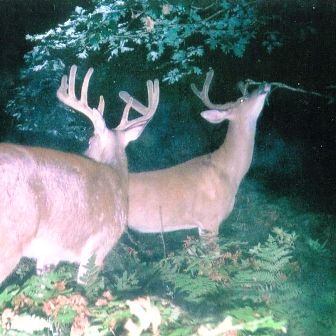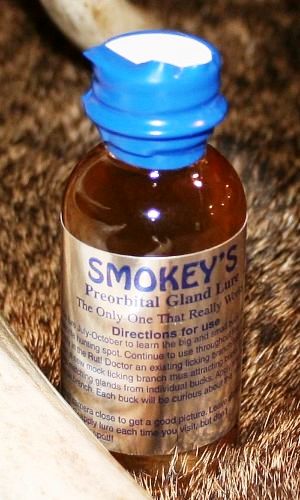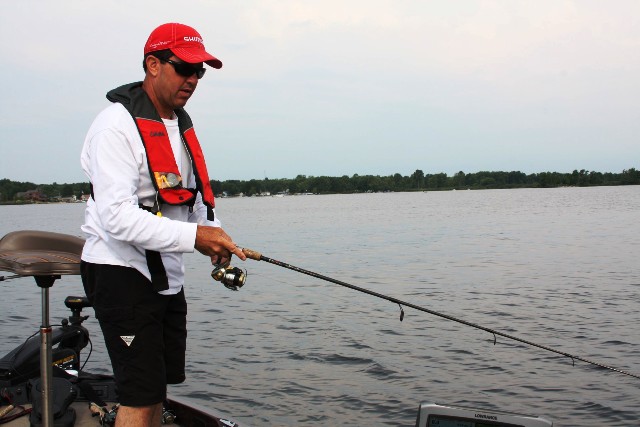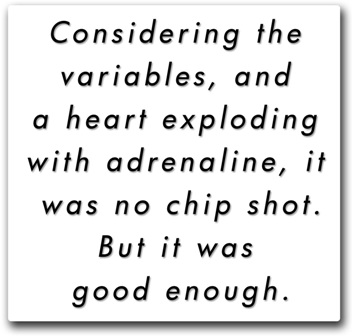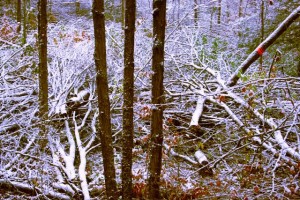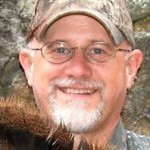Early Season Bow Bucks
By Bernie Barringer
Here is where most hunters blow it. Opening day
arrives and the wind is not quite right –
but you’ve created the perfect setup.
Any serious whitetail hunter spends some time glassing fields on late summer evenings, admiring the whitetails that are so visible at that time of the year. They’re fairly easy to pattern because their movements are predictable. Excitement builds as the opening day of bow season draws near.
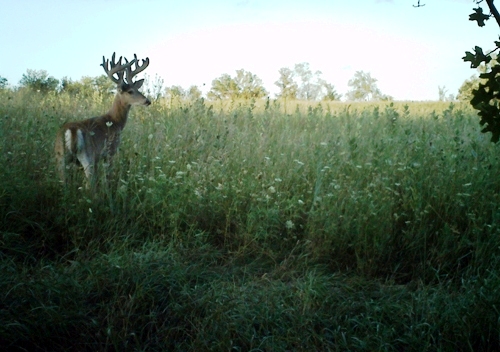
This is what we all want to see, a big velvet buck
moving out in to a field on a late summer evening.
So why is it that so few of those mature bucks are actually taken by bowhunters in the first few days of the early archery seasons? I believe many bowhunters make four primary mistakes which ruin their chances of bagging one of those bucks during early fall. Let’s take a look at them so you can avoid these mistakes.
Mistake #1 – Watch the Clock

Once the velvet comes off, bucks will often hang up back from the field edge and wait until dark to expose themselves.
Summer days are long, especially in the northern half of the US. It’s common to be seeing whitetails in the hayfields or soybeans in broad daylight at 8:30 or 9:00 in the evening. What many hunters don’t realize is that daylight hours get shorter by 4-5 minutes per day. That’s about a half hour per week. Of course, half of that time is in the evening, so every week the sun is going down 15 minutes earlier.
When deer are coming out at the same time, but it’s getting dark earlier, many hunters interpret this as “starting to go nocturnal”. Yup – the buck standing in the last rays of sunlight at 8:30, is three weeks later standing in full darkness at the same exact time. Failing to take this into account can cost you a chance at a big buck, which leads to mistake number two.
Mistake #2 – Stick with Your Stand Location

Getting stands up quickly and getting out is critical. Placing a stand back away from the edge of the field offers the hunter a better chance of seeing a buck
during shooting hours.
Too many hunters set up on the edge of the field expecting to get a shot at one of the bucks they saw a few weeks ago. In reality, those bucks aren’t likely to appear in the field during daylight. Not only is it getting dark sooner, but as the velvet comes off, the buck’s disposition begins to change. Subtle seasonal changes are beginning to happen, and he notices. He responds by becoming more cautious about showing himself, and he begins to hang up back in the woods for a while before warily moving into the open field.
If your treestand is right at the edge of the field, you may not encounter him until darkness prevents a safe and ethical shot. By moving your ambush point back 50 yards from the field, you have a much better chance of getting a shot with enough daylight to see your sight pins. Follow the entry trail a ways back and look for sign: droppings, rubs, tracks milling about, and nibbled plants. These are indicators of the area where the bucks are biding their time before making a move. That’s the spot where your stand belongs.
Mistake #3 – Fail to Trim Shooting Lanes
Many a buck has escaped with his life because a hunter didn’t trim one little branch. In the early season, leaves on the trees and shrubbery or other vegetation at ground level can mess up your shot or prohibit getting a shot at all. Be ruthless when cutting lanes. Deer are not alarmed by limbs and cuttings lying on the ground, so trim away. Try to have at least 3 or 4 good, clear shooting lanes.
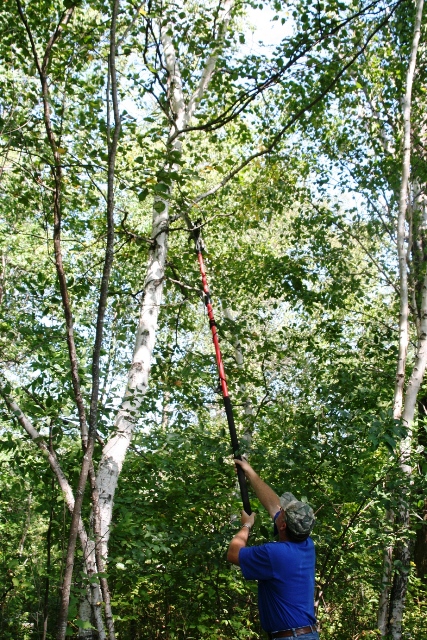
Trimming shooting lanes is important. During the early season, there are a lot of things to get in the way of a shot… be ruthless in cutting openings.
Use a long pole saw to trim high branches and a clipper to nip saplings and large weeds along the ground. Wear gloves, boots and long pants to limit human scent. Try to do it at least a week before the season opens.
Mistake #4 – Hunt the Wrong Wind
Now you have a stand in position, the bucks are in a predictable pattern and you can’t wait to get in there and get it done. But you should wait!
You may only get one chance and here is where most hunters blow it. Opening day arrives and the wind is not quite right – but you’ve created the perfect setup. What difference can a little issue with wind direction hurt – right? After all you are using good scent control and have the latest sprays and scent-control clothing.
An overly optimistic reliance on scent control has saved the lives of a lot of deer. No matter what the marketers would like you to believe, there is no such thing as scent elimination, only scent reduction.
More important than reducing scent is reducing the temptation to hunt the stand when conditions aren’t perfect! You’ve been working for weeks on what may be only one chance. Don’t make your move until the time is right. Then, go get it done. You’ll be glad you waited. I promise. Listen to the voice of experience.
Now, get your binoculars and go find a nice buck. If you avoid these four mistakes, your chance of giving him a ride in your pickup just went way up!
***
About Bernie Barringer:
 Bernie Barringer hunts a variety of species in several states and Canadian provinces. He has published more than 400 articles in two dozen outdoor magazines and authored ten books on hunting, fishing and trapping. He is the managing editor of Bear Hunting Magazine, and blogs his hunts on his website www.bowhuntingroad.com.
Bernie Barringer hunts a variety of species in several states and Canadian provinces. He has published more than 400 articles in two dozen outdoor magazines and authored ten books on hunting, fishing and trapping. He is the managing editor of Bear Hunting Magazine, and blogs his hunts on his website www.bowhuntingroad.com.
For more articles by Bernie Barringer, click here.
And for the best deer skinning knife, click here.
3,551 total views, no views today


